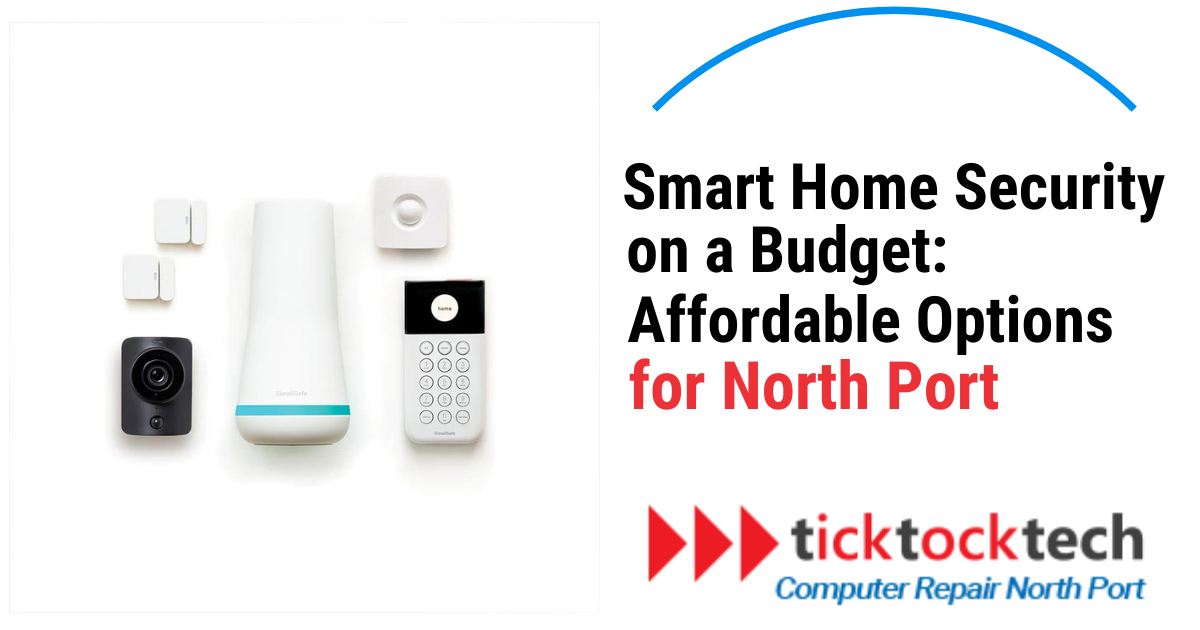Smart Home Devices are the new fascinating tech every home should have. Not only does that make home operations easier, but it is also, made of different technology. The fact that they can be controlled in different ways makes them more fascinating. Imagine having devices that seamlessly integrate and are sensitive to changes. Smart home security devices are designed to monitor your home with 24/7 sensitivity, and automated awareness and reactions. They keep you out of danger. We already talked about the complete guild of how the smart home devices work here. So, let’s see what smart home security is about, and the most affordable Smart home security devices out there in 2024.
Complete Security Setup Guild: How to secure your home with smart home security devices in 2024
1. Ring Security System
The Ring Security System is a simple and effective option for DIY home security. It costs $199 for the initial setup and $10 per month after that, making it an affordable option for those looking for a comprehensive home security system. This system works with a variety of devices. This includes Ring’s own video doorbells, security cameras, and lights. Also many third-party Z-Wave and Zigbee smart devices such as door locks and smoke alarms.

The system is simple to install, allowing homeowners to do so without the need for professional assistance. In addition, the system has performed admirably in a variety of tests, confirming its reliability. Users can self-monitor using the Ring mobile app or opt for the Ring Protect Plus plan. This includes 24/7 professional monitoring and unlimited cloud storage for Ring camera footage.
Related: Do Ring Smart Cameras work without WIFI?
However, the system has some drawbacks. It does not support IFTTT or HomeKit, which may limit users who use these platforms for smart home configurations. Furthermore, the system’s contact sensors are somewhat bulky, which may concern those who prefer more discreet security solutions. Despite these issues, the Ring Security System remains a solid choice for those looking to incorporate security into their smart home setup.
2. SimpliSafe Home Security System
The SimpliSafe Home Security System offers an accessible and flexible solution for those looking to enhance their home security without being locked into long-term contracts. Starting at around $245, SimpliSafe’s equipment packages are competitively priced, often including a free indoor camera. The system is noted for its simplicity, boasting an easy setup process that allows for rapid deployment in various home environments.
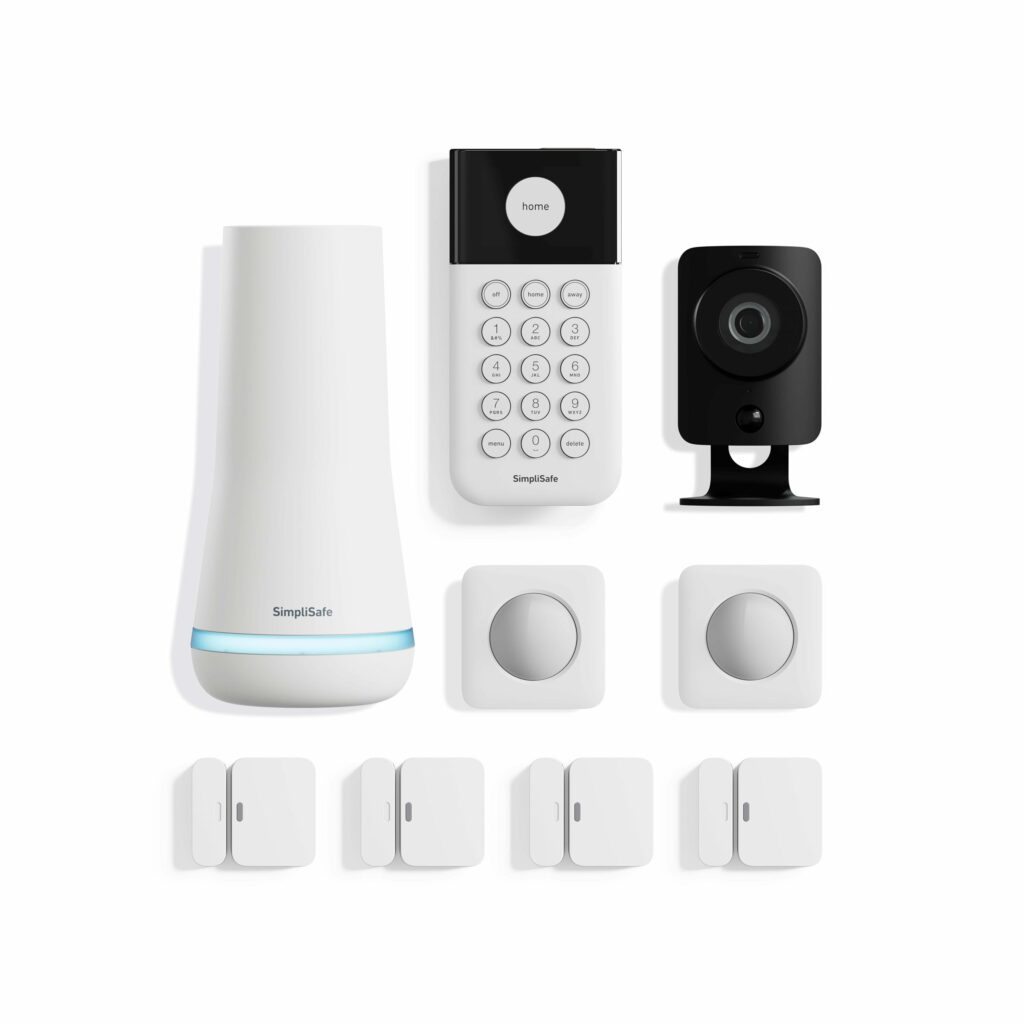
Pros of SimpliSafe include its no-contract policy, a generous 60-day money-back guarantee, low monthly fees, and a range of affordable equipment options that can be financed through Affirm.
See Also: How to Make a Smart Home: A Step-by-Step Guide 2024
The design is modern and minimalist, appealing to those who prefer sleek aesthetics. SimpliSafe also offers a free self-monitoring option and, for more comprehensive needs, the Fast Protect™ plan which provides enhanced video features and emergency services.
However, the system has some drawbacks. It has limited compatibility with other smart home devices, which could be a downside for users with existing smart home setups. The functions are basic, the base station’s siren is relatively quiet, and the camera quality is mediocre. Additionally, the system does not support multiple-user logins, which could be a limitation for households with several users.
Overall, SimpliSafe is a practical choice for straightforward home security needs, combining ease of use with flexibility in service and payment options.
3. ADT Command Smart Security System
The ADT Command Smart Security System stands out because of its comprehensive security and home automation features. It provides a complete, professionally installed, and monitored setup that appeals to homeowners looking for strong protection combined with excellent service.
The system includes ADT’s cameras, doorbells, and sensors, as well as third-party Z-Wave devices. This compatibility enables users to enhance their system and control it using voice commands from Alexa and Google Assistant.
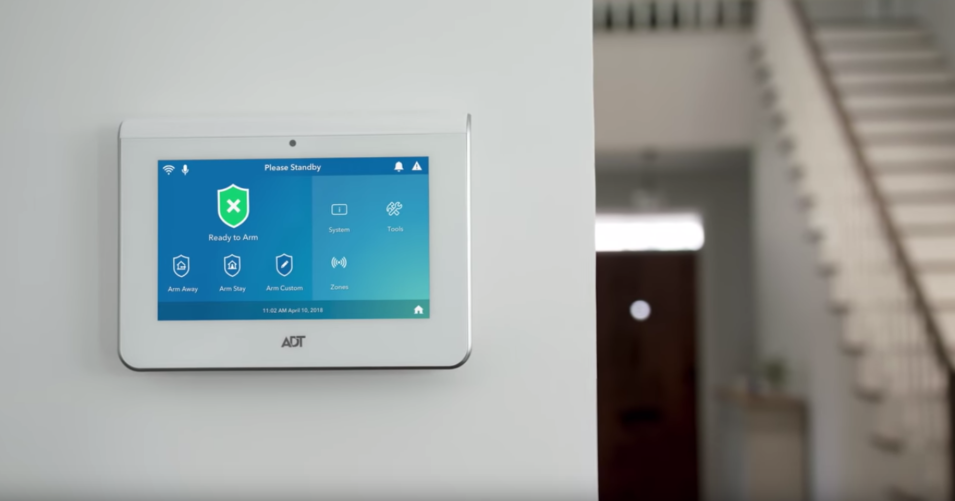
The system is well-known for its excellent customer service and mobile and web applications, which make home security management simple and efficient. Users can customize the system to meet their specific needs by selecting from a long list of compatible security and smart home devices.
Related: Smart Home Showdown: Google Home vs. Amazon Alexa vs. Apple HomeKit
However, the ADT Command system is costly, with initial installation fees, monthly service charges beginning at $59.99, and potential early termination fees.
Furthermore, signing up for this system necessitates a monitoring agreement. Despite these costs, the system’s dependability and peace of mind may justify the investment for those seeking a high-quality security solution.
4. Vivint Smart Home Security
The Vivint Smart Home Security system provides a comprehensive and professionally monitored security solution. With an initial cost of $599 and monthly fees starting at $39.99, this system is on the expensive side but provides extensive control and monitoring capabilities.
Users can control door locks, cameras, thermostats, and even track their cars on the road, all from a 7-inch touch-screen panel, a mobile app, or voice commands via Alexa and Google Assistant.
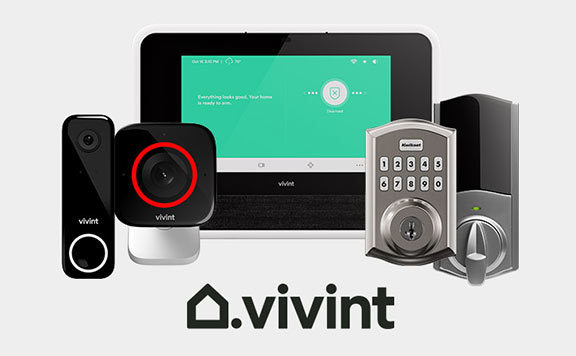
Vivint is designed for homeowners who prefer a simple setup, as it includes professional installation and comprehensive technical support, both over the phone and in-home. This system is especially appealing to those who value quick emergency response times and want to incorporate advanced home automation.
However, there are disadvantages. The system requires a monthly subscription to access remote features, and some components may be expensive.
Overall, Vivint Smart Home Security is ideal for those looking for a high-end, fully integrated security system that combines convenience and advanced features.
5. Abode Security Kit – Best for Smart Home Integration
The Abode Security Kit has received attention for its extensive smart home compatibility. Abode, unlike many budget providers, supports Apple HomeKit, Z-Wave, and Zigbee in addition to Amazon Alexa and Google Assistant. This enables users to connect to a variety of third-party devices.
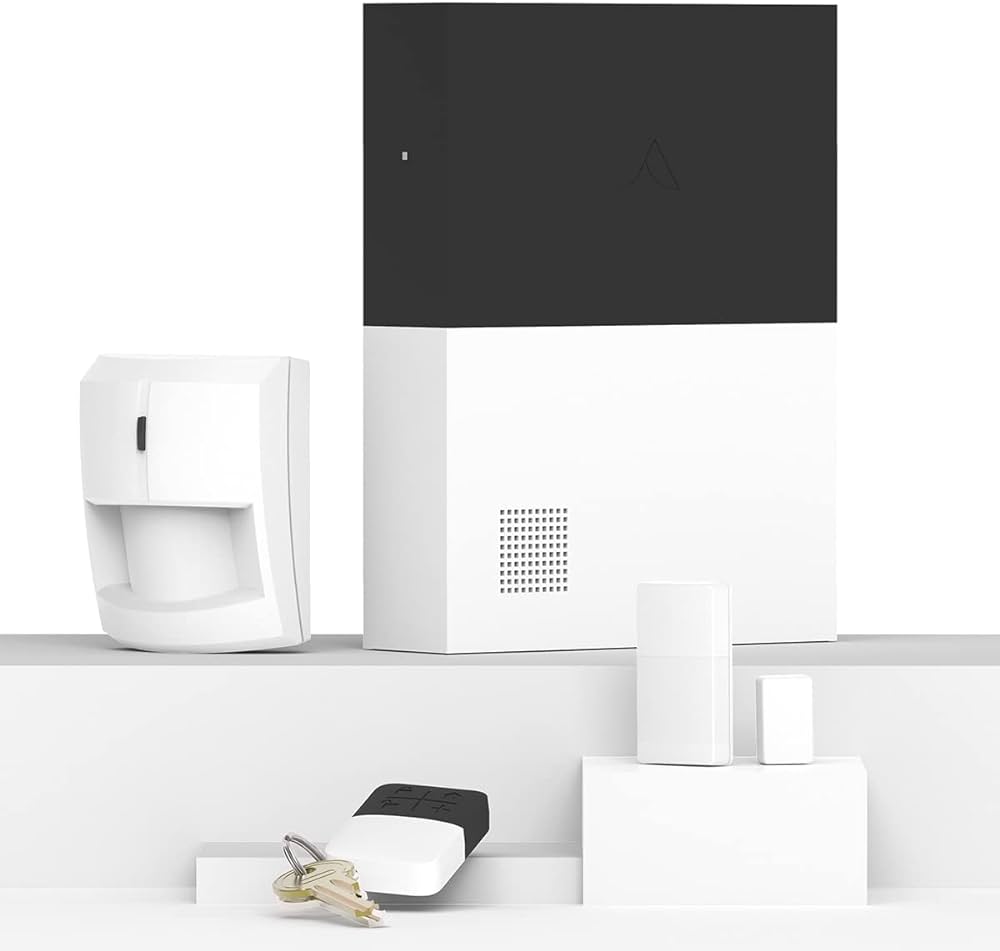
Abode offers the Smart Security Kit, which includes a hub, motion detector, and window sensors, as well as the Iota system, which costs about $80 more and includes a built-in security camera. The Iota system combines a camera with Wi-Fi, Z-Wave, and Zigbee capabilities, making it extremely adaptable.
More on Smart Homes: Customizing your Smart Home Routine in 2024: Expert Tips and Tricks
The Abode Security Kit has several key advantages, including excellent smart home integration and a free self-monitoring option. However, the free plan lacks custom home automation capabilities, which may limit those who want to customize their systems extensively.
Pricing is competitive, with financing options available. Professional monitoring is available for a monthly fee to provide additional security. The user-friendliness of Abode’s mobile app has improved, making the system more appealing to those looking for a comprehensive, adaptable home security solution.
6. Ring Alarm Pro Kits
The Ring Alarm Pro is a versatile installed home security system that also serves as a Wi-Fi 6 mesh router. Designed to improve both security and internet connectivity in your home. An upfront cost starts at $299.99 and monthly fees begin at $20. It offers a blend of affordability and advanced technology for those looking to upgrade their home network.
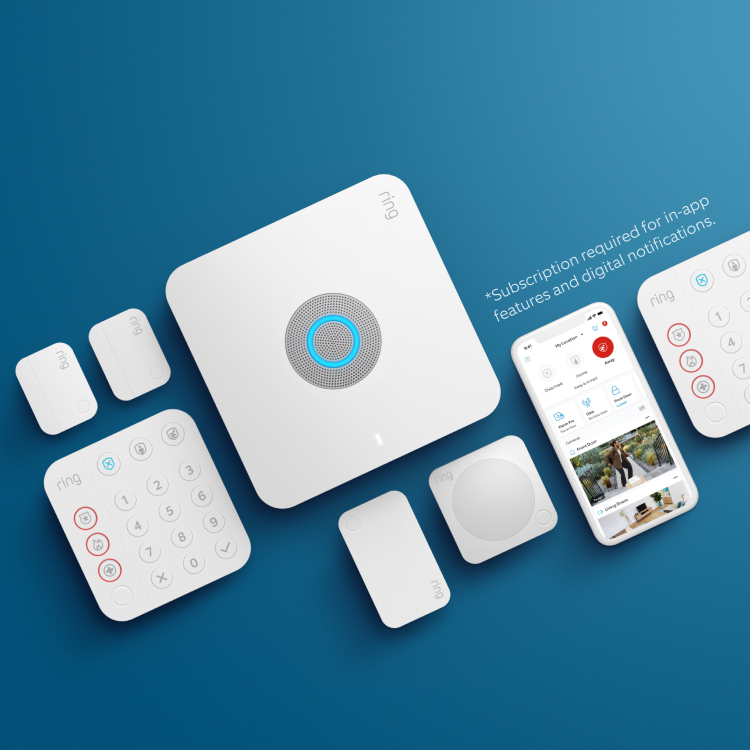
This system is particularly suitable for users who desire to enhance their smart home ecosystem while ensuring robust internet coverage across all areas of their residence. It includes a built-in Eero 6 router, which allows for expansion with additional nodes to extend Wi-Fi reach even further.
Related: The Best Smart Home Tech at CES 2024
Pros of the Ring Alarm Pro include its dual functionality as both a security system and a Wi-Fi router, effective power and internet backup solutions that keep the system running up to 24 hours during outages, and compatibility with Alexa for voice control. It integrates seamlessly with Ring’s own devices and many third-party products, adding to its versatility.
However, there are notable limitations. The Ring Alarm Pro does not support Google Assistant, HomeKit, or IFTTT. This could be a dealbreaker for users who rely on these platforms. Additionally, accessing all features of the system requires a subscription, adding to the long-term costs.
7. Kangaroo Smart Home Security
Kangaroo Smart Home Security stands out for its affordability and innovative use of Wi-Fi connectivity. Unlike many other systems, Kangaroo doesn’t require a control panel or hub, which simplifies setup and use. Users can start building their security system piece by piece without needing to buy a starter kit, though kits are available.
The price point of Kangaroo’s devices is notably low, with most equipment priced at $30 or less. This makes it one of the most cost-effective options on the market. The monthly monitoring plan is also economical, costing $8.25 per month when paid annually, offering significant savings compared to other services.
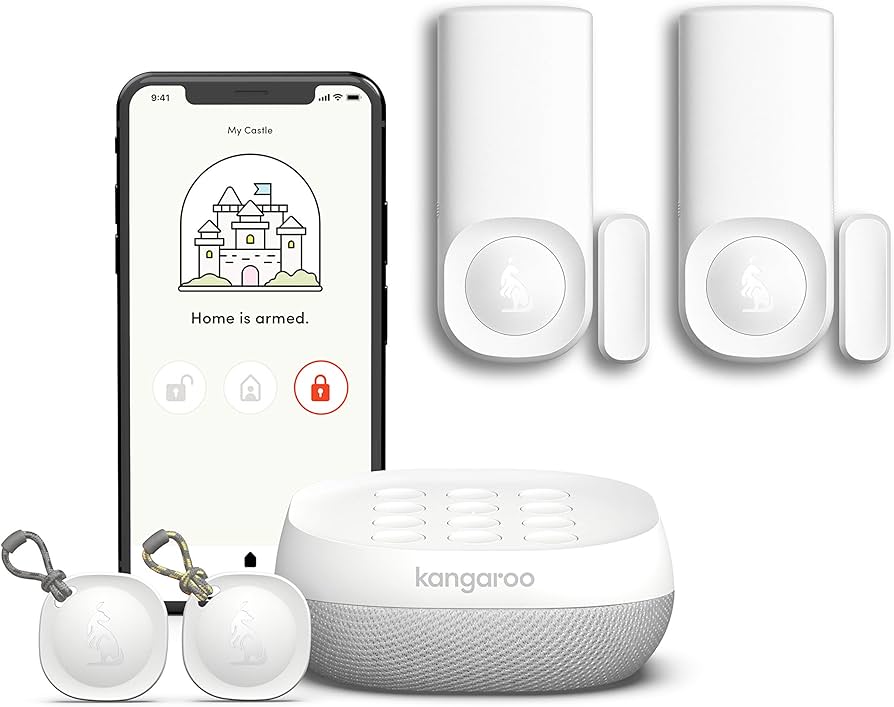
However, Kangaroo’s system does have some limitations. It offers a narrow selection of equipment, with only seven devices available. This range is less extensive compared to competitors like Ring Alarm and SimpliSafe. Additionally, for smart home integration with platforms like Google Assistant and Amazon Alexa, a paid monitoring plan is required.
Despite these drawbacks, Kangaroo remains a good choice for those who prefer a straightforward, wallet-friendly security solution. It includes features like a year of cloud storage for the doorbell camera and theft protection up to $1,000, adding value to its affordable setup.
8. Wyze Security System
The Wyze Security System is notable for its low cost, with 24/7 professional monitoring for just $10 per month. This price point makes it one of the most affordable options on the market for those looking to improve home security without making a significant financial investment. The system includes basic security features like entry sensors, a motion detector, and a keypad, which provide adequate security coverage.
One of the most notable aspects of the Wyze system is the inclusion of cloud video storage for one camera, which adds value and convenience. Wyze is also known for making some of the most affordable security cameras available, such as the Wyze Cam v3. This camera is praised for its high-quality video and outdoor capabilities, making it a popular choice among budget-conscious buyers.
However, the Wyze Security System has limitations. It lacks cellular backup, which means it can’t communicate with the monitoring center when the internet is down. This could be a major drawback during internet outages. In addition, the system has a one-year warranty, which is less generous than some competitors’ lifetime coverage.
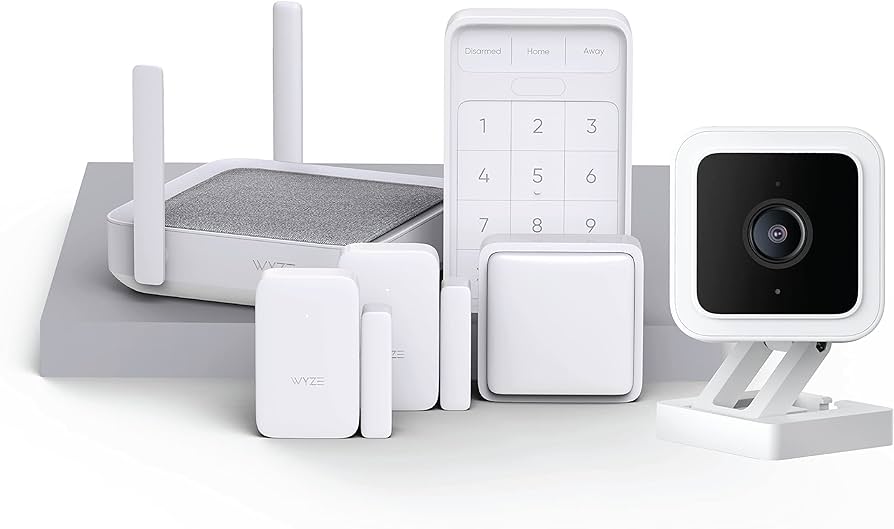
Despite these drawbacks, the Wyze Security System remains an appealing option for those looking for basic security features and low-cost monitoring. Its compatibility with Amazon Alexa and Google Assistant makes it more convenient for users who are already integrated into those ecosystems.
See also: Best Cheap Smart Home Devices
Steps to take to secure your home using smart home security devices.
There are steps to take when using smart home security devices, such as organizing and deciding on the best placements for complete security. Here are the steps to take. By following these steps, you can use smart home security equipment to ensure that your home is protected around the clock.
1. Evaluate your home’s security needs before selecting a smart home security system. When completing this task, consider all of the available spaces and rooms.
2. Place motion detectors and smart cameras strategically throughout your home to monitor for potential security threats.
3. Set up alerts and notifications to stay informed about any suspicious activity.
4. Integrate smart home security devices with smart locks and thermostats to create a complete, always-on security system.
5. Smart control features enable remote monitoring and management of your security system, even while away from home.
6. Regularly update your security system’s firmware and software to prevent current security threats.
7. Secure your smart home security systems with strong passwords and two-factor authentication to prevent hacking.

